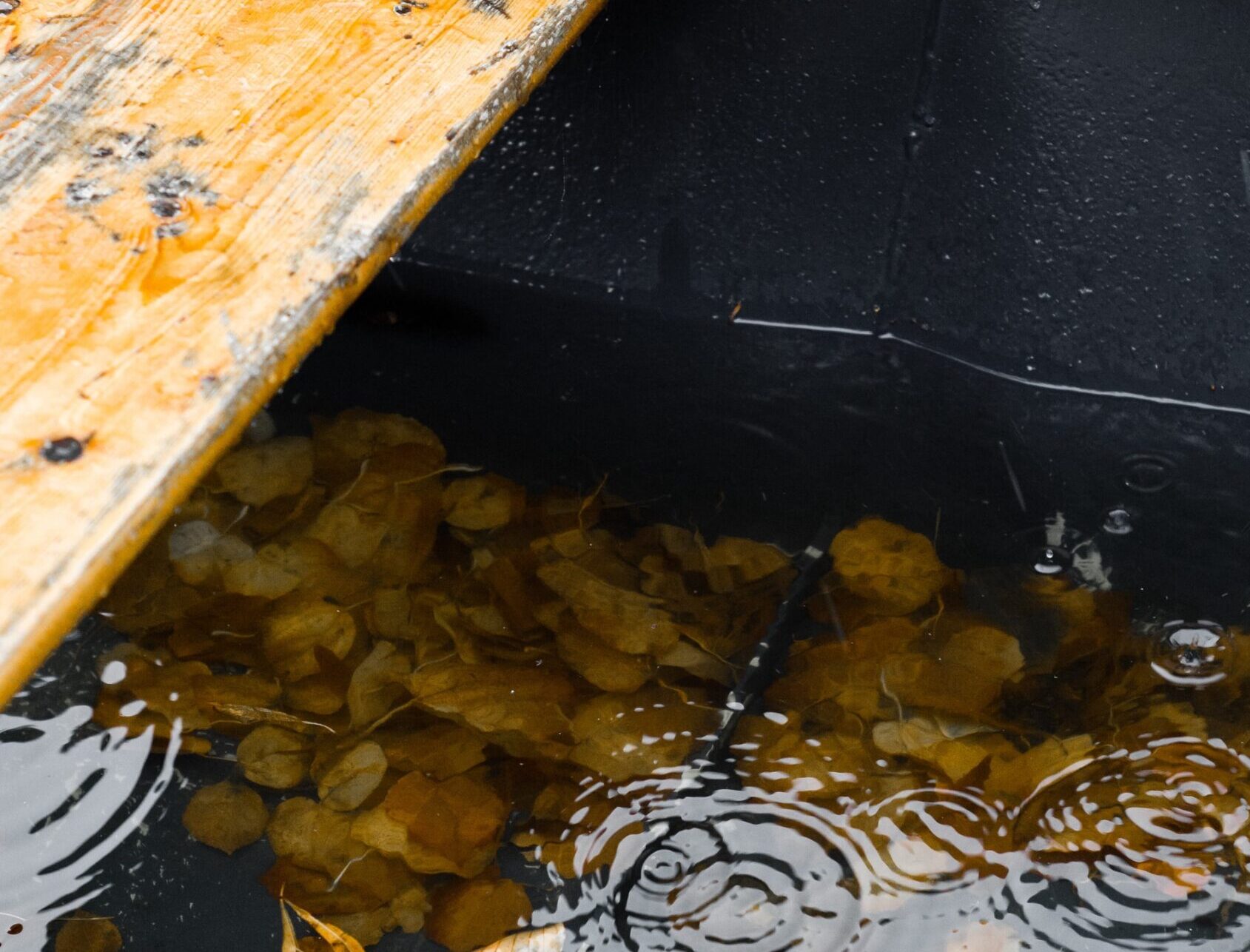From the Rev. Dr. Dennis S. Tierney, Property Manager
This paper is one of a planned series of occasional papers about property management designed for congregational leaders in the Diocese of Olympia. Each paper will feature an aspect of property management and will be based on actual experiences and events, suitably masked to protect the innocent.

Photo by Sven Brandsma on Unsplash
The title of this paper is taken from Coleridge’s poem, “The Rime of the Ancient Mariner.” This paper is not about the dangers of drinking sea water but rather is about the dangers of water when it goes where it is not wanted. When that happens, buildings are damaged, programs disrupted, and unplanned expenses are incurred. And water damage always seems to occur at the worst possible moment in the life of a church – Christmas Eve, Easter morning, or an hour before a major funeral. Ask me how I know.
Water damage can come from broken pipes, leaks in fittings or faucets, or failed sprinkler systems inside a building. Water damage can also occur when gutters and downspouts fail or are blocked. Water damage can adversely impact carpets, flooring, interior paint, furniture, musical instruments, electrical and computer systems, and church furnishings like robes and vestments. Un-addressed small water damage can create mold and mildew and make a building uninhabitable unless major repairs and renovations are done.
![]()
What can church leaders do to prevent such expensive problems?
- Walk the buildings, inside and out, once a week and check for evidence of leaks of any kind. All toilets should be flushed to check for proper operation and checked to ensure that all the seals and fittings are functioning. Similarly, faucets should be turned on and off to ensure they are operating properly. Outside, irrigation systems should be checked for leaks. In winter, all irrigation systems should be shut off and drained of water. In freezing weather, all outside faucets should be shut off or protected from freezing. You may also want to check inside faucets if they are in areas that are not heated adequately. In very freezing weather, leaving the water to trickle out of a problematic faucet can save you from broken pipes. In enclosed areas, consider leaving a light on during freezing weather to keep pipes from freezing and breaking.
- Know where all your water shut-off valves are located and know how they work. There will be a main water valve from the street or well. There may be sectional water cut-offs inside your buildings. There may be shut-off valves on toilets, dishwashers, and other appliances with water connections. Map them and check them to be sure they work. Teach your building and grounds people about them.
- Consider purchasing water leak detectors for kitchens and water heaters. They can be slaved to a smart phone so that you can get alerts if there is water where it should not be at any time. Some devices can also shut off water to the affected area when a leak is detected. One could also purchase a water monitor and place it on the main water connection into your building so that any water movement will be noticed. This can be extremely helpful during the pandemic when fewer people are using your building(s). Such devices are available for less than $100 and do not require professional installation.
- Water basins can be installed under water heaters or washing machines or dishwashers, especially if these devices are on the second or higher floors. Since water runs to the lowest level, if you have leaks upstairs, the water will run down and flood other areas. Such devices take no power to operate and are silent. They can overflow so having a means of notifying someone of a leak makes good sense as well.
- Ensure that all gutters and downspouts are clear and working properly. It rains in the Pacific Northwest and gutters and downspouts are critical to have water stay where it belongs. Cleaning them is necessary at least annually, and, depending on the foliage on your property, cleaning them two or three times a year may be necessary. If your buildings have flat or membrane roofs, making sure that the water moves off the roof is extremely important. Keep water from pooling on your roof; you will be glad you did. And do not forget to move the water away from your building foundation by ensuring that all downspouts direct the water away from the building.


This is great information, especially for a small congregation such as ours in Hoodsport. We are all volunteers and we plan to all work together in property management of our church. Thank you.
Many years ago one of our Altar Guild members after church came to tell me that steam was coming out of the hot water tap. That tap and our water heater were about as far apart as the could be. I hollered for every one to evacuate the building, and opened all the taps in the kitchen and two bathrooms. The parish hall filled with steam. Hot water had not been used since the previous Sunday. I am not even sure that entirely the best step to take. I think it was.
I asked a couple plumbers how you would prevent such an incident, and at the time really did not get a good answer. I think modern safety features are much better, but still do not know how to take steps with an older hot water heater which has not been replaced and up to current code.